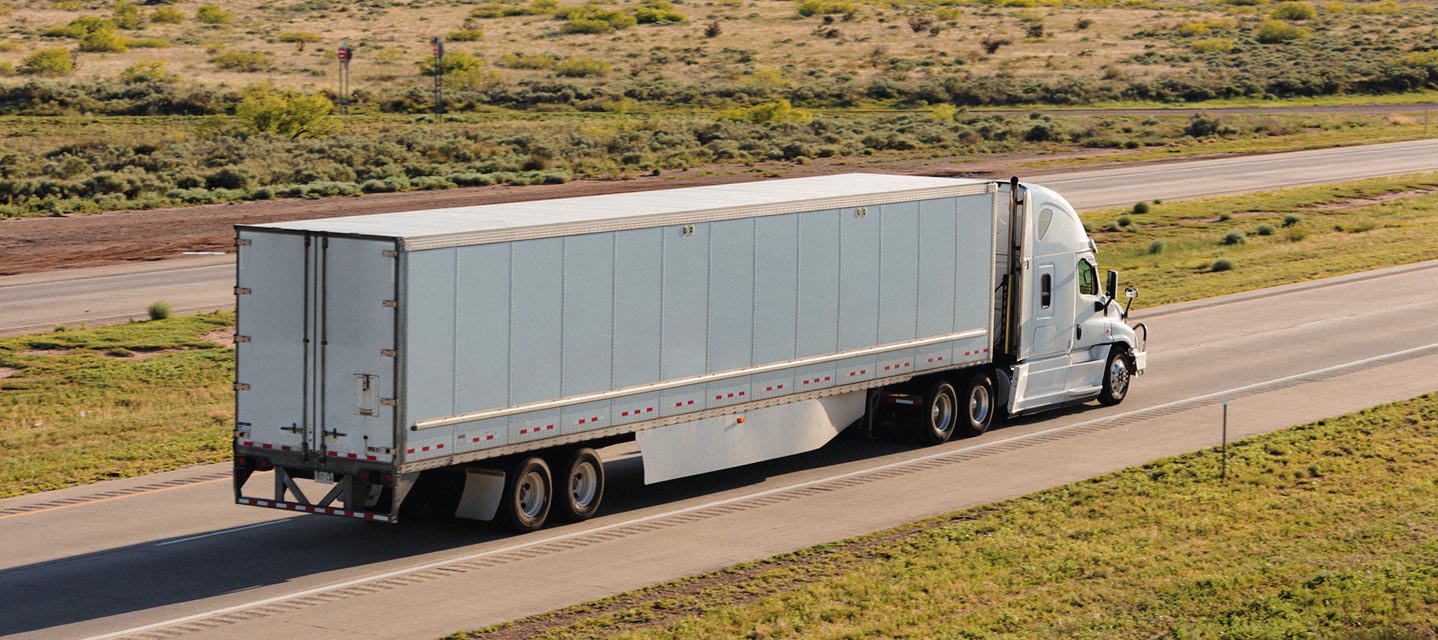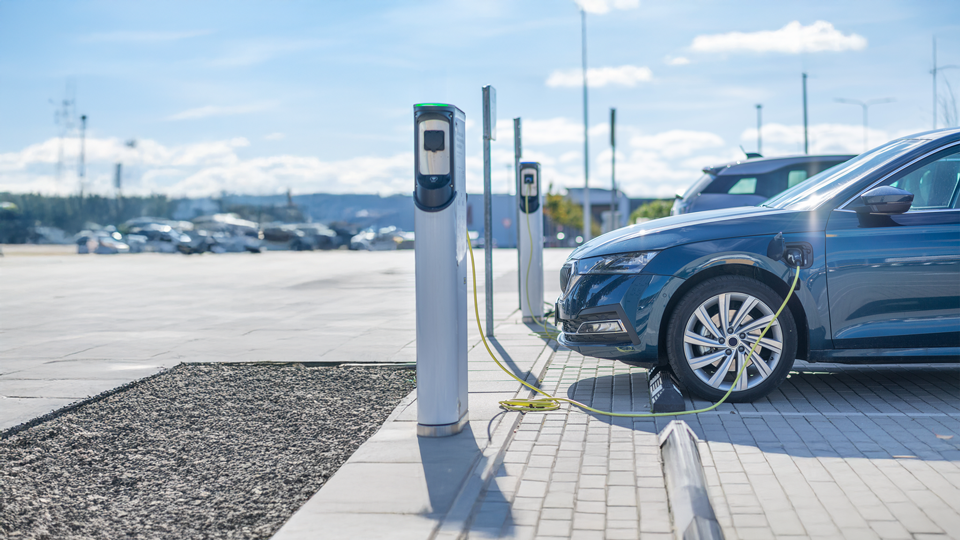Understanding EV range anxiety and tips on overcoming it
Are you worried that electric vehicles won’t go the distance? Read how to stop worrying and overcome commercial EV range anxiety.
By Geotab Team
Jan 20, 2025

An increasing number of fleet managers are becoming interested in electric vehicles (EVs), spurred on by the promise of lower operating costs and environmental impact. With zero tailpipe carbon emissions, battery electric vehicles (BEV) are an attractive option for a range of light, medium and heavy-duty fleets, especially where authorities are introducing and enforcing more stringent air quality standards and other emissions regulations. However, despite this growing interest, a survey of fleet managers by Kia Motors found that 80 percent were held back from actually making the switch due to range anxiety.
What is electric vehicle range anxiety?
EV range anxiety is the fear that an EV won’t have sufficient charge to complete its duty. Along with purchase price and charging concerns, range anxiety is still one of the greatest barriers preventing fleets from going electric.
Early models of electric vehicles had a poor reputation for real-world range between charges. Drivers sometimes found they couldn’t get much more than 70 miles from a fully charged battery, despite manufacturers’ claims that far greater mileage was possible. This tainted the image of the electric vehicle market early on and, to some extent, it’s still shaking the industry now.
Naturally, no fleet manager wants to worry about rescuing stranded employees and company vehicles, with the associated recovery costs and loss of productivity. You also don’t want to be dealing with employees’ fears that the vehicles you provide them will be unreliable and inconsistent. If your fleet vehicles are used for multiple trips or jobs throughout the day, or on routes with challenging conditions, you may be especially concerned.
But should EV battery range be a genuine worry if you’re considering adding electric vehicles to your fleet? And what can you do to prevent it from being one?
What is the average range for an electric vehicle?
There have been significant improvements with lithium-ion batteries and, as a result, EV range has increased. There are now many light-duty EVs capable of driving between 200–350 miles on a single charge. The following is just a small selection of EV models that have an estimated range over 200 miles and are available now:
- Audi e-tron GT – 249 miles
- Chevrolet Blazer – 283 miles
- Ford Mustang Mach-E – 320 miles
- Ford F-150 Lightning – 240 to 320 miles
- Hyundai Kona Electric – 261 miles
- Nissan Leaf – 149 to 212 miles
- Tesla Model 3 – 272 to 363 miles
- Tesla Model Y – 279 to 320 miles
- Volkswagen ID.4 – 206 to 291 miles
While these models will be impacted by real-world driving conditions – like any vehicle – their higher starting range means that they will be able to drive much farther than early EV models.
Our research on real-world fleet vehicle usage indicates that the average light-duty vehicle in North America covers only 78 miles per day, so all of these vehicles have the ability to complete multiple days of driving between charges or multiple journeys in one day if used as pool vehicles.
What different factors can impact an electric vehicle’s range?
There are a number of factors that can play a role in an EV’s effective range, but they usually fall under three categories: driver behavior, temperature and battery health.
With traditional fuel vehicles, bad driving habits can reduce fuel economy. The same can be said for EVs. Speeding, harsh braking and rapid acceleration all use additional energy, which results in shorter range capabilities.
Temperature is one of the most commonly mentioned reasons for reduced range; however, this factor is usually misunderstood. Lithium-ion batteries do typically perform worse in the cold, but EVs have advanced battery thermal management systems that keep them at the optimal temperatures. Some energy is used for these systems, but the majority of temperature-related range loss comes from energy being used to heat or cool the vehicle’s cabin.
All rechargeable batteries eventually lose the ability to store their full amount of energy. This is known as battery degradation. For an EV, this results in reduced range over time. Fortunately, our data shows that this decline in battery health is minor, with an average degradation rate of 1.8% a year. This means an EV with a rated range of 270 miles would have an effective range of around 247 miles after 7 years – the usual lifespan of a fleet car.
3 tips for maximizing EV range and reducing range anxiety
Try these range anxiety solutions to better understand how to maximize EV range and minimize worries.
1. Provide driver training
Your drivers are the key to getting the most range possible out of your EVs. A smooth driving style, driving at sensible speeds and limiting harsh acceleration or braking, contributes to better energy efficiency and longer range.
Training your drivers to preheat or precool the vehicle while it is still plugged in reduces the energy required to reach a comfortable temperature and ensures energy is being conserved for driving.
Finally, promote the use of the vehicle’s regenerative braking system. By enabling the car’s maximum regenerative setting and leveraging this energy-recovering function when coming to a stop, the driver will send the most power back to the vehicle’s batteries while decelerating, increasing its range.
2. Rightsize vehicles to their tasks
EVs might not make suitable replacements for every one of your internal combustion engine (ICE) vehicles, but there will be many opportunities to save money by switching out those on suitable duty cycles.
For each vehicle and duty cycle, consider the conditions that they encounter. Is the terrain hilly? Is it subject to extreme temperatures, either cold or hot? Factors such as these can put more of a strain on batteries and in turn impact the real-world range they can attain.
Also think about the maximum daily mileage that the vehicle will need to achieve (or mileage without rest at a designated center). What is the duty location and would the vehicle have proximity to appropriate charging infrastructure, whether that’s your own, or public? Interestingly, our research has found that, on average, most light-duty commercial vehicles drive around 80 miles per day and only around 50% ever drive more than 250 miles in a given day. Clearly it’s important to understand the real-world circumstances of your vehicles to effectively introduce EVs.
3. Keep your vehicles well maintained
As with all vehicles, a robust preventative maintenance schedule helps to keep fleet operating costs down. In the case of EVs for example, maintaining the correct tire pressure can help get the best mileage out of each charge. Tire pressure can vary by an average of one PSI with every 10-degree Fahrenheit change in air temperature, so make sure to schedule tire pressure checks as the seasons change.
Electric Vehicle Suitability Assessment (EVSA) for range assurance
Before committing to any fleet upgrade, fleet operators must look for hard data to support their future purchasing decisions. First, this means getting a complete overview of the current demands and costs of their operations, and then seeking data to show how transitioning to electric vehicles could save them money, while guaranteeing the same performance.
This is where the EV Suitability Assessment (EVSA) comes in, giving fleet managers the ability to identify the ideal candidates for replacing based on their unique duty cycles, and providing complete range assurance.
The EVSA uses existing fleet telematics data to analyze the current demands of your operations and then provides recommendations of the specific ICE vehicles that would be most beneficial to retire and transition to electric. The analysis considers both the financial impact and the range suitability of the switch.
The EVSA analyzes the driving history of each connected vehicle in your fleet to provide range assurance and ultimately ease any concerns about commercial vehicle range anxiety.
What you can learn from an EVSA:
- What are the range requirements for each vehicle in my fleet?
- Will the EV perform the same job and meet the range requirements of the current vehicle?
- Will it be sufficient to only charge overnight?
- Will the battery still perform in extreme weather conditions?
Armed with this data, you can confidently move forward with transitioning your fleet to electric vehicles, safe in the knowledge that range will never be a concern for you or your drivers.
Talk to us to learn more about the EVSA and how you can assess your fleet.
Are you starting your electrification journey? Check out our Fleet Electrification Knowledge Center for resources, tools and fleet success stories to help guide you on your way.
Subscribe to get industry tips and insights
The Geotab Team write about company news.
Table of Contents
Subscribe to get industry tips and insights
Related posts


The future of transportation: Trends, research and what’s next according to experts
July 17, 2025
9 minute read

Beat the Heat: Easy Ways to Maximize Your EV Range This Summer
June 19, 2025
2 minute read

Charlotte Argue: Breaking down cost barriers for electric fleets
June 5, 2025
4 minute read

